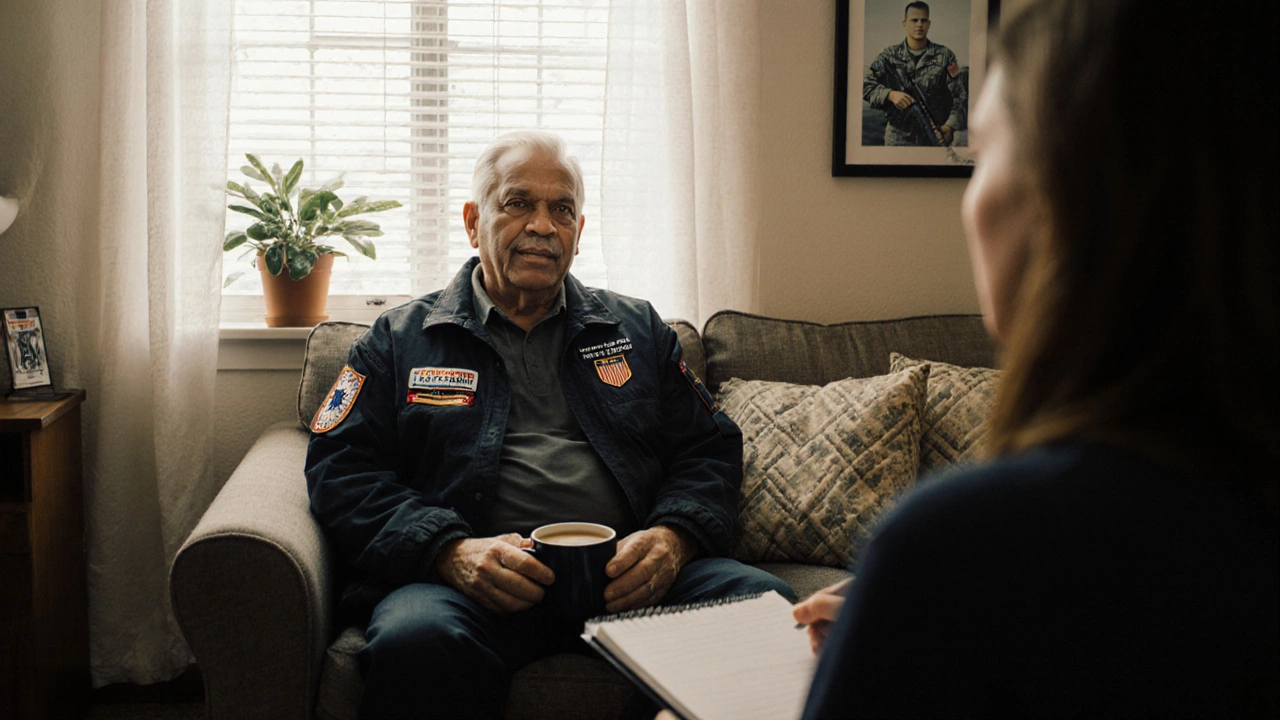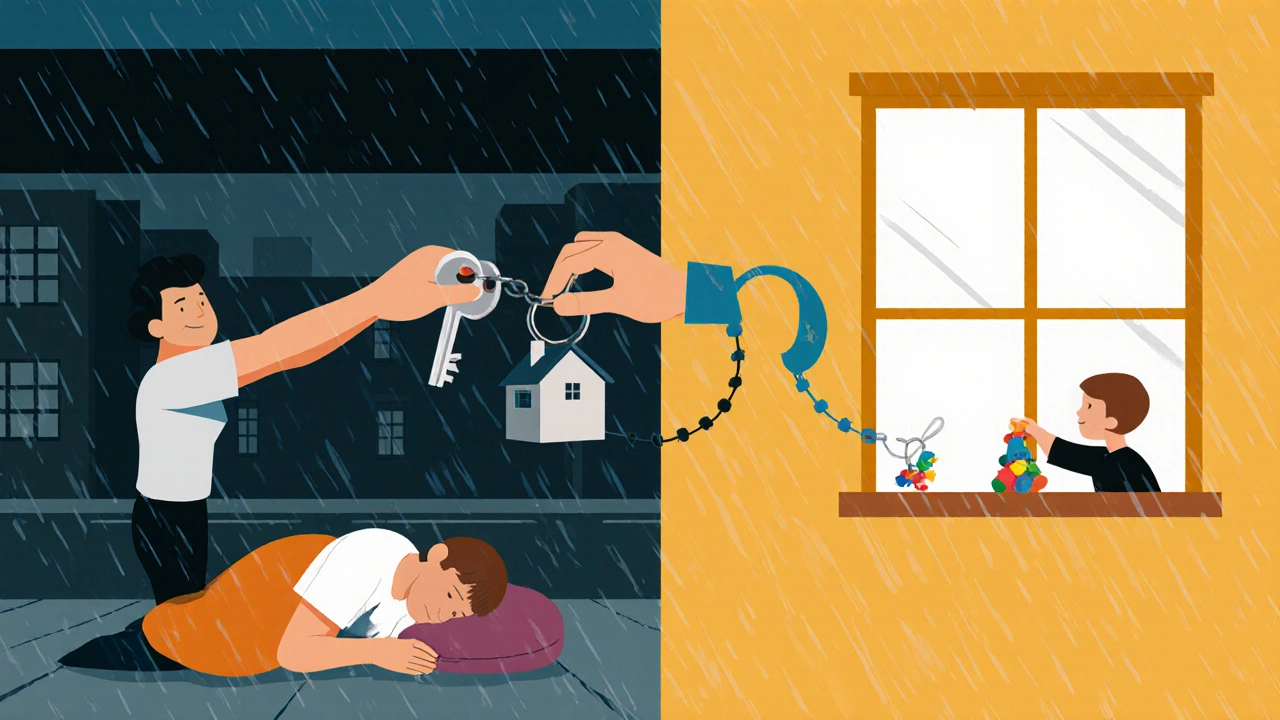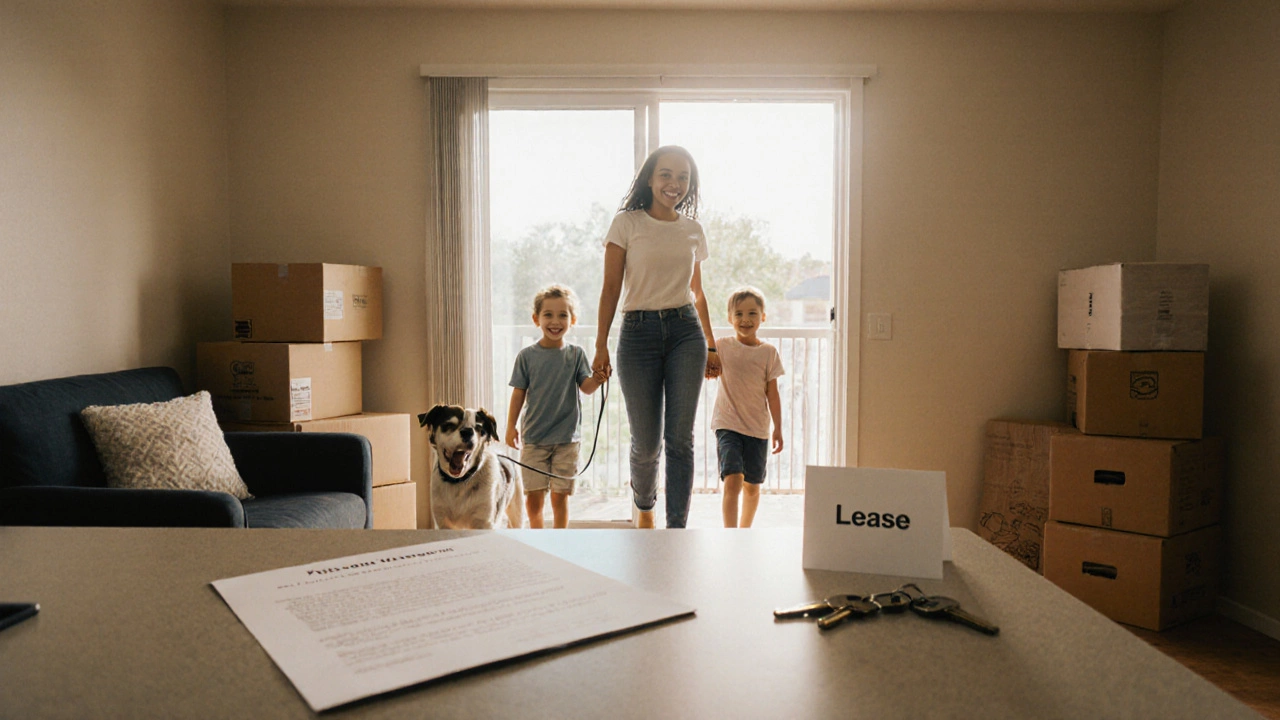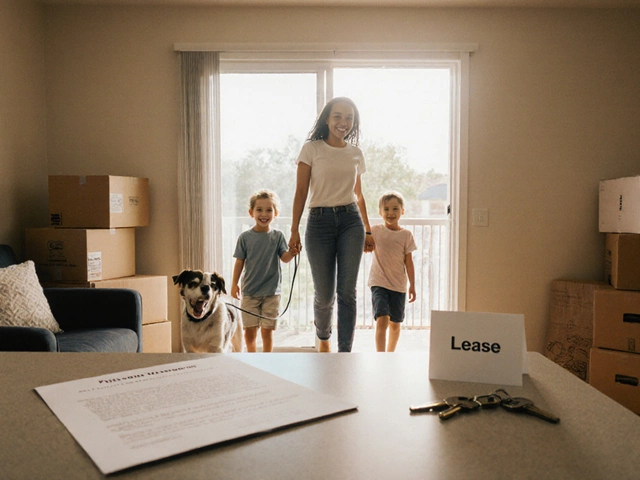Rapid Re-Housing Eligibility Calculator
Determine if your current housing situation qualifies for Arkansas' Rapid Re-Housing program. The program helps people pay for rent when income is too low to afford housing after covering basic needs.
When someone in Arkansas loses their home, they don’t always have to wait months for help. The Rapid Re-Housing program is designed to get people back into stable housing fast-sometimes in just a few days. This isn’t a shelter. It’s not a temporary bed. It’s a real apartment or house with a lease, keys, and a chance to rebuild. And it’s working.
How Rapid Re-Housing Works in Arkansas
Rapid Re-Housing in Arkansas gives people who are homeless financial help and support services to move into permanent housing quickly. The state partners with local nonprofits, housing authorities, and community organizations to make this happen. Most participants get help with rent for a few months, security deposits, utility payments, and case management.
Unlike shelters, which offer temporary beds, Rapid Re-Housing focuses on long-term stability. The goal isn’t just to get someone off the street-it’s to help them stay off it. Participants sign a lease just like anyone else. They pay a portion of their income toward rent, usually no more than 30%, and the program covers the rest. This keeps housing affordable while encouraging financial responsibility.
Case managers are assigned to each household. They don’t just hand out forms-they walk people through applying for jobs, getting ID cards, connecting with mental health services, or finding child care. In 2024, over 2,100 households in Arkansas exited homelessness through this program, according to the Arkansas Department of Human Services. That’s more than 5,700 people, including children, seniors, and veterans.
Who Qualifies?
You don’t need to be a veteran or have a disability to qualify. Anyone who is literally homeless-sleeping in a car, shelter, or on the street-can apply. People fleeing domestic violence, those recently released from jail or hospital, and families who got evicted without other options are also prioritized.
There’s no credit check. No background check for most applicants. The program is designed to remove barriers, not create them. Income matters, but not in the way you might think. You don’t need to be unemployed to qualify. Many participants are working but earning too little to afford rent after paying for food, medicine, or transportation. In Arkansas, where the average rent for a one-bedroom apartment is $920 a month and the minimum wage is $11.00/hour, that’s a common struggle.
Where Does the Money Come From?
The program is funded by federal grants through the U.S. Department of Housing and Urban Development (HUD), with matching funds from the state and local nonprofits. Arkansas receives about $18 million annually for Rapid Re-Housing. That money goes directly to landlords and service providers, not to individuals. This keeps the system transparent and reduces fraud.
Local organizations like the Arkansas Coalition to End Homelessness, the Salvation Army, and Catholic Charities run the day-to-day operations. They screen applicants, find available units, negotiate with landlords, and provide ongoing support. Many landlords participate because the program guarantees rent payments-even if the tenant’s income is delayed. Some even offer discounted rates for program participants.

What Makes It Different From Other Programs?
Traditional emergency shelters often have strict rules: curfews, no pets, no couples, limited stays. Rapid Re-Housing has none of that. You can bring your dog. You can stay as long as you need. You don’t have to prove you’re "worthy" of help.
It’s also faster. While waiting lists for public housing can stretch over a year, Rapid Re-Housing moves people into housing within 30 days for 70% of applicants. That speed is critical. The longer someone is homeless, the harder it becomes to get back on track. Studies show that people who get into stable housing within 60 days are twice as likely to stay housed a year later.
Other programs like transitional housing require participants to attend counseling or job training before they can move in. Rapid Re-Housing flips that model: housing comes first, then support. It’s based on the idea that people can’t focus on fixing their lives if they’re still sleeping on the ground.
Real Stories From Arkansas
In Little Rock, Maria, a single mother of two, lost her apartment after her hours were cut at her job at a grocery store. She spent three weeks sleeping in her car with her kids. A caseworker from the Arkansas Homeless Services Network found her through a local food bank. Within 11 days, she had a two-bedroom apartment, rent assistance for six months, and help enrolling her kids in school. She’s now working full-time again and paying rent on her own.
In Fort Smith, James, a veteran who struggled with PTSD after his service, was living under a bridge. He didn’t want to go to a shelter-he didn’t trust the system. But when a Rapid Re-Housing outreach worker met him there with a bag of groceries and a simple question-"Want to come inside?"-he said yes. Within two weeks, he had his own studio apartment, a VA counselor, and a part-time job at a local hardware store.
These aren’t rare exceptions. They’re the norm.

Challenges and Criticisms
Not everything is perfect. In rural areas like Conway or Jonesboro, finding landlords willing to rent to people with no credit history is tough. Some property owners still fear damage or late payments, even though the program guarantees rent. Outreach workers have to spend extra time convincing them.
There’s also not enough housing. Arkansas has a shortage of affordable units. Even with Rapid Re-Housing, many people wait weeks because there simply aren’t enough apartments available. The state is working on building more, but progress is slow.
Some critics say the program just delays the inevitable-that people will fall back into homelessness once the 6-12 months of rental help end. But data shows otherwise. In Arkansas, 82% of participants remain housed one year after the program ends. That’s higher than the national average.
How to Get Help or Help Others
If you or someone you know is homeless in Arkansas, call the state’s 24/7 Homeless Hotline: 1-800-546-1754. You can also visit your local Department of Human Services office. No appointment needed. Bring any ID you have-even a birth certificate or Social Security card helps.
If you want to help, donate to local organizations running the program. Volunteer your time to drive clients to appointments, help with move-in kits, or just offer a meal. Landlords who rent to program participants get tax credits and guaranteed payments. It’s a win for everyone.
Rapid Re-Housing isn’t magic. It doesn’t fix poverty or mental illness. But it gives people a foundation. And from there, they can start climbing.
Is Rapid Re-Housing the same as public housing in Arkansas?
No. Public housing is owned and managed by government agencies, often with long waiting lists and strict rules. Rapid Re-Housing places people in private apartments or homes with landlords who agree to participate. The process is faster, more flexible, and gives participants more control over where they live.
Can I apply for Rapid Re-Housing if I have a criminal record?
Yes. Most criminal records don’t disqualify you. The program focuses on current housing need, not past mistakes. Only certain violent or sex offenses may be reviewed on a case-by-case basis, and even then, exceptions are often made if the person has completed rehabilitation.
How long does rental assistance last?
Typically, rental assistance lasts 6 to 12 months. In some cases, especially for families with children or people with disabilities, it can be extended up to 24 months. The goal is to help people get back on their feet, not to provide permanent subsidies. Most participants find stable income and pay rent on their own before assistance ends.
Do I need to be a U.S. citizen to qualify?
No. Legal immigrants and people with approved immigration status can qualify. The program does not ask about immigration status during intake. You only need to prove you’re homeless and live in Arkansas.
Can I get help if I’m living with friends or family?
Generally, no. Rapid Re-Housing is for people who are literally homeless-sleeping in places not meant for habitation. If you’re couch-surfing, you might still qualify if you’re at risk of becoming homeless within 14 days. Case managers will assess your situation to determine eligibility.


